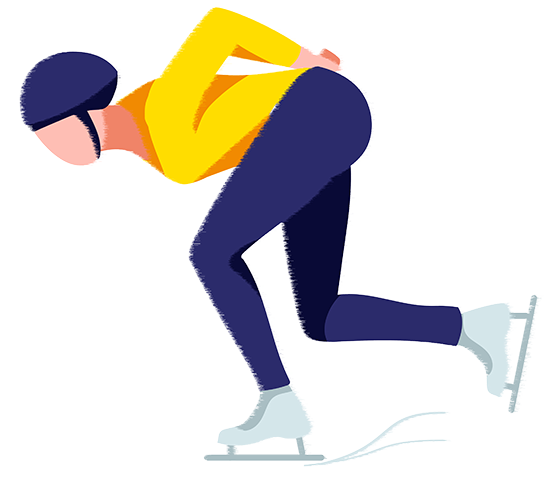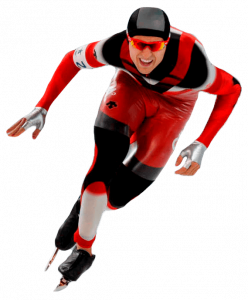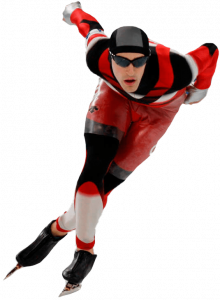All about Speed Skating Canada, World Speed Skating Championships and the Best Canadian Skaters
Speed skating is one of the most ancient sports in the history of humanity. It is currently an Olympic sport with separate competitions for men and women. In Canada, speed skating became part of sports culture in the mid-19th century. Today, this kind of sport is very popular. It is actively developing thanks to the Speed Skating Canada organization. It is a governing body for the competition in speed skating at long and short distances.
The pages of Speedsk8.ca contain all the most important information about the history of speed skating, main world skating championships, as well as the strongest athletes from Canada and their performance.
About Speed Skating and Its World History
In speed skating, the athlete needs to overcome a certain distance on ice skates as quickly as possible. This sport was born thanks to the ability of people to move on frozen lakes and rivers. The Dutch were the first to master skating skills. In this way, as early as the 13th century, they travelled through channels covered with ice in winter from one point to another.
Over time, the love of skating came to England. It was a favourite hobby of many English kings. The country began to open the first artificial skating rinks and clubs for engaging in this sport.
Since those times, skating has become a global love. People all over the world enjoy this kind of sport, be it by going in for skating, scoring tickets to World Cup 2015, or watching skating competitions on TV.
For instance, a recent poll held by Canadian sports field researchers among various companies showed that their employees prefer oval skating to other sports. Thus, the most skates-loving employees turned out to be working at:
First Competitions
The first known speed skating competition in the world took place in the Netherlands in 1676. However, the official skating tournament took place only in 1863. The first venue was the city of Oslo. The first World Cup took place in 1889. Then, in addition to the competition host Netherlands, athletes and national teams from England, the USA and Russia also performed.
Olympic History
Speed skating, for the first time, appeared in the Olympic Games held in 1924 in one of the French cities, Chamonix. Initially, participation in competitions in this sport was held only among men. At the Games in 1932 in Lake Placid, USA, women also took part. However, these were demonstrative performances. Officially, women’s speed skating was included in the programme of the Olympics held in 1960 in the American Squaw Valley.

Speed Skating Competitions
Speed skating is a fairly popular sport included in the programmes of various competitions both at the national and international levels.
- Olympic Games. It is the most prestigious championship held every four years.
- World Championship. It is a series of international competitions supported by the International Skating Union.
- World Cup Calgary. It is a series of speed skating events taking place under the auspices of the International Skating Federation every winter. It is one of the most important stops in the World Cup circuit.
- European Speed Skating Championship.
- National Championships.
History of the Speed Skating Canada Organization
The first official speed skating competition in Canada is considered to be the race of three British army officers in 1854. From Montreal along the St. Lawrence River, they got to Quebec. It did not take long for the sport to become one of the Canadians’ favourites and enter the country’s sporting culture.
Already in 1887, a special organization was created – the Amateur Skating Association of Canada. Today, this association controls and hosts all events and competitions in this sport in Canada.
As the popularity of speed skating and the number of professional athletes grew every year, there was a need for a body to govern this sport at the international level. Therefore, in 1892, all the world’s skaters united in the International Skating Union (ISU) Canada. The Canadian branch joined the ISU in 1894. Today, the ISU home is responsible for organizing and regulating major speed skating competitions
Very popular in the US and Canada today, the short track was created in 1905. Since then, competitions have been held on two tracks or distances.
In the next century, the Amateur Skating Association of Canada experienced major changes. In 1960, the association was renamed to the Canadian Amateur Speed Skating Association. In 2000, the organization took its current name Speed Skating Canada.
Basic Rules of Speed Skating Race
A speed skating race looks like this:
- athletes pass distances simultaneously (in pairs) counter-clockwise;
- one athlete starts on the outside lane while the other starts on the inside lane;
- after passing the distance, the athletes change lanes.
- when the skaters change lanes, they may meet each other. According to international rules, the athlete who is on the inside lane lets the one who runs on the outside track pass. If this rule is not observed, the speed skater will be disqualified by the organizing committee.

As for mass starts and races in teams, here, everyone runs only along the inside track. In the short track, the number of participants can be up to six. Everyone runs counter-clockwise.

Skaters face disqualification if they do not adhere to certain restrictions, including:
- It is forbidden in any way to help or interfere with other participants in the skating race.
- It is not allowed to shoot down the chips that mark the boundaries of the track.
- It is also forbidden to put the foot forward at the finish line and take skates off the ice during the run.
Special Equipment and Tracks
Speed skaters perform in special suits and skates for running and also pass distances on specially designed tracks, which we have already talked about a little. So, let us take a closer look at all the equipment of athletes in speed skating.
Skate Claps
The skates used in this sport are different from the usual ones. Skaters pass distances in special skate claps. This is a kind of boots made of carbon fibre or fibreglass. In addition to this boot, a removable blade system is attached with a hinge located in the front, as well as a free spring-loaded back.
These are the only skates with a movable blade. Another difference from conventional skates is the blades’ length and larger rounding radius. This sports shoe got its name due to the characteristic sound that is heard after the athlete pushes off and the spring returns the boot to its original position.
Costume
A special skater suit or jumpsuit follows the shape of the athlete’s body. Any inserts or other elements that change the shape of the body are strictly prohibited for all athletes. To protect against injury, skaters are allowed to wear special ankle, knee and shin guards under their suits.
Helmet
Like a jumpsuit, a protective helmet must follow the shape of the athlete’s head. For short track distances, speed skaters’ equipment also includes gloves, kneepads, neck protection and goggles.
Tracks
As a rule, the track is an oval 400 meters long. Less often, it can track 333 meters long. The inner turning radius of the track is 25-26 meters. Straight sections of the track are usually equal to 100 meters.
As we said earlier, a track consists of outer and inner parts. On one of the straight parts of the track, athletes tend to change these lanes every lap.
The Olympic Oval in Calgary, Canada, is one of the most famous speed skating tracks in the world, known for its fast ice and numerous world records. It is also home to the Canadian national speed skating team and offers public skating sessions for those who want to experience speed skating in Calgary themselves.